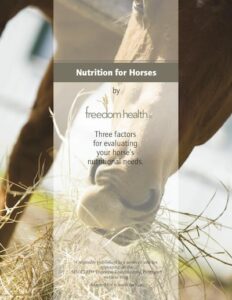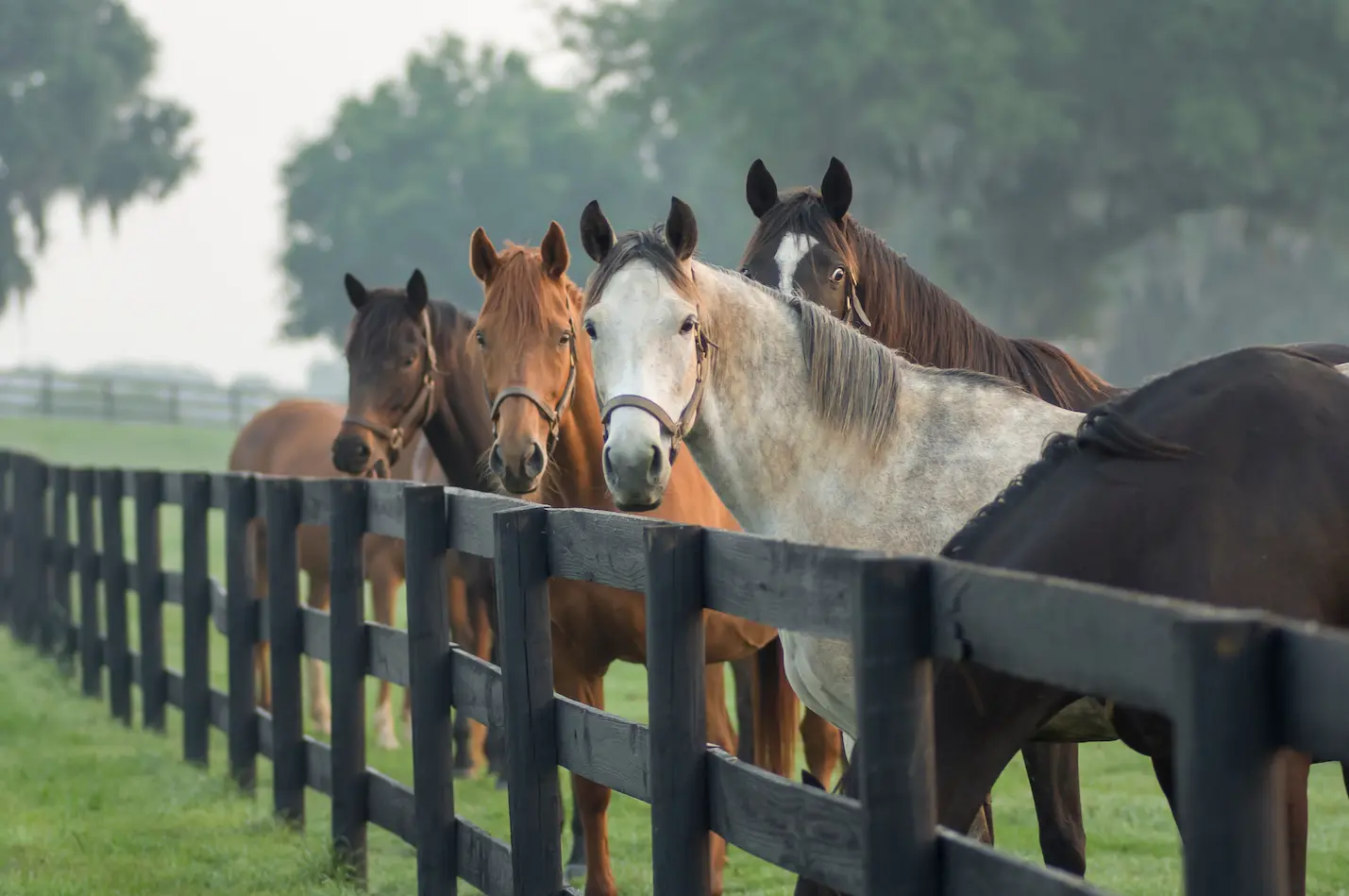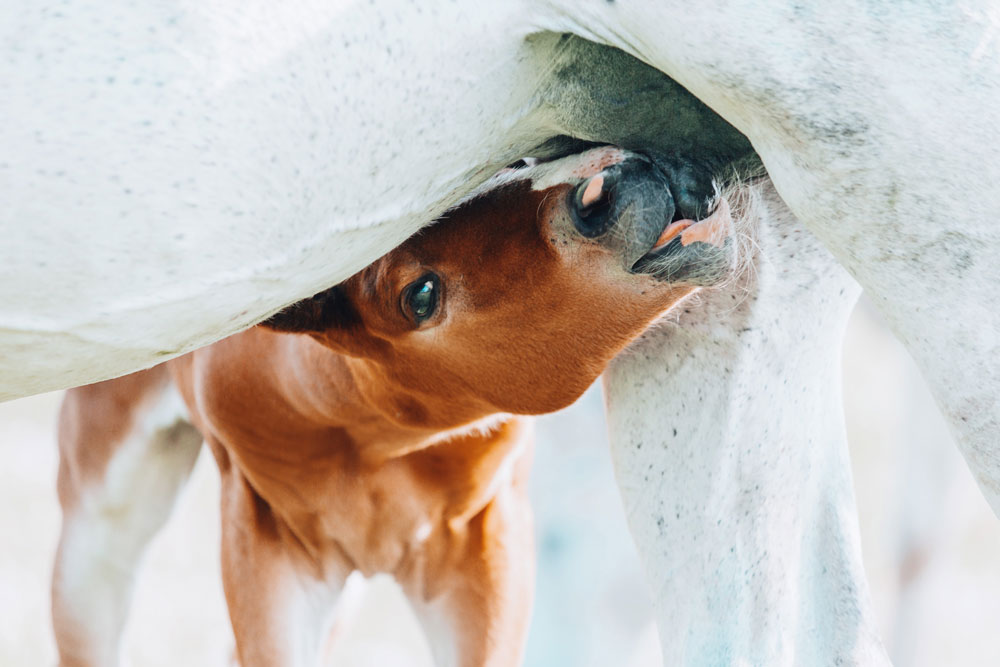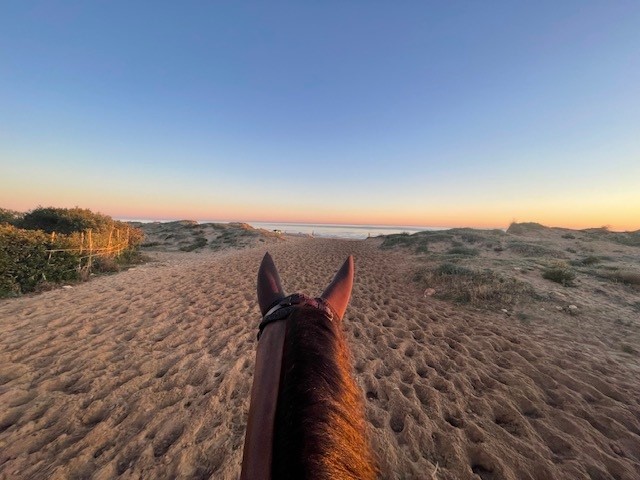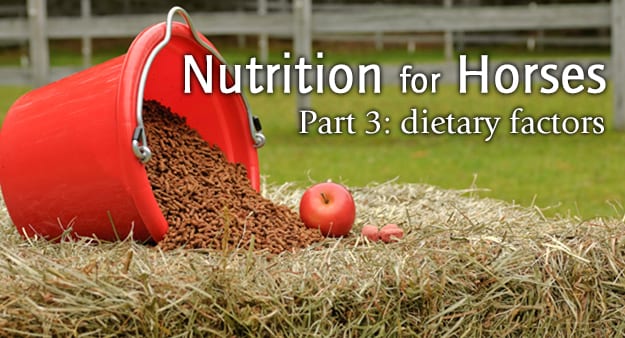 Our five-part series on developing an appropriate dietary program continues this week with a focus on the specific nutrients your horse needs. Adapted from a model presented by the American College of Veterinary Nutrition, Part 3: How Individual Dietary Factors Affect Nutrition Requirements will help you design a nutrition program that is both appropriate and safe. Subscribe to the SUCCEED blog so you don’t miss any part of this five-part series.
Our five-part series on developing an appropriate dietary program continues this week with a focus on the specific nutrients your horse needs. Adapted from a model presented by the American College of Veterinary Nutrition, Part 3: How Individual Dietary Factors Affect Nutrition Requirements will help you design a nutrition program that is both appropriate and safe. Subscribe to the SUCCEED blog so you don’t miss any part of this five-part series.
Basic Nutrients All Horses Need for a Healthy Diet
Different types of forage, grasses and grain provide different types and amounts of nutrients. How much of each nutrient your horse needs will depend on his individual horse factors — the physical characteristics we discussed in our last post. Nutrients fall into six main classes: carbohydrates, fats, protein, minerals, vitamins and water. A customizable chart from the National Research Council of the National Academies can help you estimate the nutrients your horse may need (based on weight and lifestyle), but always consult a nutrition professional before making major changes.A Breakdown of the Six Essential Nutrients
To understand what any animal needs from its diet — including horses, humans, dogs and others — it’s important to understand these six core nutrients: carbohydrates, fats, proteins, minerals, vitamins and water. Here we present a basic overview relative specifically to the diet of the horse. More information can be found online or in nutrition books.1. Carbohydrates
Carbs provide the bulk of a horse’s energy. When discussing carbohydrates in the context of nutrition, it’s best to think of them in two broad categories — fibrous and nonfibrous. Fibrous carbs are the structural carbs found in the seed coats and stems of plants. Pasture plants and hay generally have more fibrous carbs than harvested grains, along with other important nutrients. Nonfibrous carbs (or nonstructural carbs) are mainly starches and sugars. Feed products containing mostly grains and seeds (like corn, oats and wheat) are primarily made up of nonfibrous carb sources. Immature pasture grasses have higher levels of nonfibrous carbs than more mature grasses.- Get fibrous carbs from: forages such as timothy, alfalfa, Bermuda grass, and orchardgrass, and other high-fiber ingredients like beet pulp and wheat bran.
- Take Note: When grain feeds rich in nonfibrous carbs are fed in large quantities, they can’t be digested and they can pass into the cecum and large intestine. This can lead to the production of lactic acid and can create an overly acidic environment in the hindgut. For this reason, nonfibrous carbs (grains) should be limited in a horse’s diet, and fibrous carbs (forages) should be prioritized.
2. Fats and Fatty Acids
Dietary fats provide energy, help improve body condition and act as carriers for fat-soluble vitamins. Ounce for ounce, fat also contains more than twice as much energy as carbohydrates or protein, so it’s one way to increase a horse’s calories without overloading his grain rations.- Where fats are found: Grasses and alfalfa; grain and sweet feeds, and in brans, ground flaxseeds and other seeds, liquid oils, and in powdered or pelleted fat supplements.
- Heads up: Most horses need less than 10 percent of their total diet to come from fats. Always introduce any added fats slowly.
3. Proteins/Amino Acids
Most tissues in a horse’s body are made of protein, which is made up of chains of amino acids. Most of these amino acids are produced by the body; others (called essential amino acids) must be obtained from food sources. Proteins serve many functions, including maintaining and producing muscles, enzymes and hormones.- Where protein is found: Alfalfa, grass hay, grain and grain by-products. Also soybeans, bran, beet pulp and seeds.
- Take Note: It’s important to feed a source of protein that includes essential amino acids (such as lysine), as the horse’s body doesn’t naturally make these essential amino acids.
4. Minerals
Dietary minerals are nutrients that include calcium, phosphorus, potassium, sulfur, sodium, chlorine, and magnesium. Important “trace” minerals necessary for the horse include iron, cobalt, copper, selenium, zinc, manganese and more. Horses require large amounts of calcium and phosphorus for building bone (this is especially true for growing horses).- Where minerals are found: Sodium, potassium, zinc and copper are often found in grain mixes, supplied in mineral blocks or added as a top-dressing to feed. Forages naturally contain minerals. Fortified grain mixes will supply them, as well as mineral blocks or added supplements.
- Heads Up: Add minerals via mineral blocks and supplements, as relying on grain to supply it may result in an overdose of simple carbohydrates.
5. Vitamins
Some vital nutrients can’t be made by the body and must be ingested via feed. Most (if not all) of a horse’s vitamin needs are supplied via the levels naturally occurring in grains and pasture grasses. Hay no longer contains the vitamin content that once existed in living grasses.- Where to find vitamins: Fresh forage supplies beta carotene (which the horse converts to vitamin A) and vitamin E; sunshine provides vitamin D.
- Heads Up: Most commercially prepared horse feeds include vitamin supplements; check to be sure before adding supplemental vitamins on top.
6. Water
Clean, readily available water is essential for good health. Dehydration can cause illness and death much more quickly than if any of the above feed nutrients were lacking in a horse’s diet. To prevent dehydration during cold temperatures, provide a heated water source; horses do not typically drink enough ice-cold water to meet their needs.Where to Find Nutrients
All of the carbohydrates, protein and minerals a horse needs can be found naturally in grass. However, vitamins and fats are easily destroyed by the environment once grass is cut for hay, making dried forage products (such as beet pulp, hay and chaff) low in these nutrients. Like their ancestors, modern horses are hardwired to process and make the most of naturally occurring sources of energy. For most horses, an appropriate fresh forage mixture may be the best way to get the vitamins and minerals necessary for good nutrition. For horses that have limited access to quality pastures or that require additional energy, it’s critical to rethink how this extra energy is provided. Throwing simple carbs at the problem won’t help — evaluate what nutrients are missing from your horse’s diet, and adjust accordingly.Safety of Feed
All types of feed need to meet basic safety requirements. Your nose and eyes can tell you if your hay is spoiled or moldy. If grain or hay becomes wet, moldy, dusty or is infested by rodents, it’s imperative to replace it immediately.How SUCCEED Can Help
Optimal nutrition is achieved when a horse is getting the appropriate mix of nutrients to match his lifestyle. Some horses may ingest the correct balance of nutrients but be physically unable to use them. The challenges introduced by traveling, competing, breeding or illness may interfere with a horse’s normal, healthy ability to absorb nutrients effectively. SUCCEED can help maintain the healthy digestive system in the horse, in the face of these challenges, to help him get the most out of his feed. When we ask our horses to compete, we sometimes make it difficult to follow a feeding program that revolves around grazing and free access to roughage. Other practicalities, like time and money, can also interfere with following a “natural” approach to feeding. SUCCEED can help mitigate those factors by helping your horse get the best possible nutrition out of the feeding program that works for you and your horse.Up Next: Part 4: Feeding-Management Factors
A successful feeding program relies heavily on how you implement it. Stay tuned as we address what may be the most important factor of all — your feeding schedule. Be sure to subscribe to the SUCCEED blog so you don’t miss any part of this series.This series was reviewed separately by two independent experts. One is a board-certified veterinary nutritionist who wishes to remain anonymous. The other is Juliet M. Getty, Ph.D. an equine nutritionist, writer, consultant and speaker. Dr. Getty currently serves as a panelist of the Equine Sciences Academy and formerly as contributing nutrition editor for Horse Journal.

